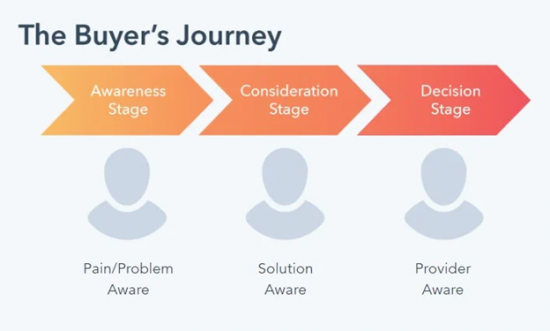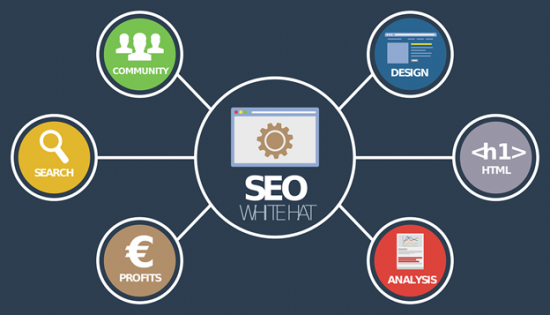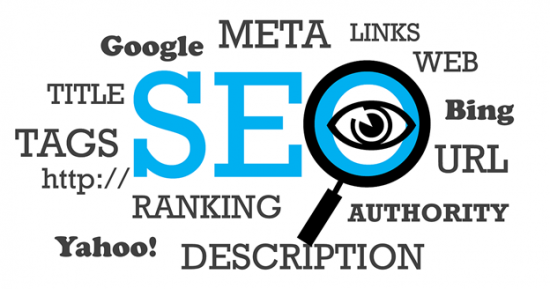The customer journey has inexorably changed because of search engines and digital marketing. Customers touch base with search engines at multiple points on their way down your sales funnel. This makes SEO vital to make your brand more visible, so you can be found where customers are looking for the products or services you offer.
Unless your SEO strategy integrates with your customer journey strategy, your prospective customers won’t be able to find you, but SEO strategies are usually keyword focused and not focused on the buyer. This is a mistake.
In this blogpost, we look at how best you can integrate the two to make both strategies more effective.
What is the Customer Journey?
The customer journey is the sum of experiences prospects go through as they seek a product or service. It’s every interaction a prospective customer has with your brand, regardless of whether they become a patron or not.
The digital landscape has made the customer journey nonlinear and complicated. It typically has the following steps:
Awareness –> Consideration –> Conversion –> Post-conversion
At the awareness stage, you introduce your brand to someone seeking a solution for their needs. Customers then move to consideration or research, where they check out competitors, read reviews and consult with family and friends. Then comes conversion i.e. the point where they trust you enough to make a purchase. The post-conversion stage is dependent on your customer service management.
The entire customer journey has multiple points of interaction where you can deliver the information prospective customers need. What’s important is how you exert your influence to push the prospect from one stage to another.
Understanding the customer journey can help you develop effective marketing campaigns. When you know the route your customers take, you can understand their motivations, anticipate their needs and help them achieve their goals.

(Image source: https://blog.hubspot.com/marketing/content-for-every-funnel-stage)
How Does SEO Integrate with Customer Journey Strategy?
Search engines are the first place your target consumers will go when they have a need. In a survey, 48% of more than 14,000 online shoppers said they start their purchase journey on search engines.
Search engines help customers find you, but unfortunately, they help them find your competitors too. The one who comes out on top in the search rankings will be the one with the better SEO strategy.
Strong SEO can be your most powerful asset, turning intrigued prospects into paying customers. The right strategy will be designed while keeping the road the customer takes to push that coveted “buy” button in mind. Your SEO should assist the prospect as they move down the sales funnel, from first discovery to post-purchase.
Imagine you’re a business communication systems provider, and your most popular products are VoIP (voice over internet protocol) and a multi-line phone system for small business. Your target customers are companies with call centres.
You have to strategically devise your keyword strategy and create backlinks to your content. With effective SEO in place, you can also target prospects who are further down the marketing funnel.
With the communication systems provider example, you might create videos or infographics that provide customers with more information about your product and how it will resolve their problems. You need to match SEO keywords with customer intent.
Your SEO-driven landing page should have keywords related to VoIP for call centers.
The content should tell them your business value proposition and how VoIP could be game-changing for them.
Search engines have gotten smarter and want to answer people’s questions with high-quality content. Gone are the days of keyword stuffing and backlink strategies. Search engines are machines to answer questions and they give priority to websites that have relevant results for user queries.
The following points in your customer journey might involve an online search. There could be more, but these are the most common touchpoints:
- Product research
- Competitor analysis
- Price checking
- Delivery options
- Customer service
Let’s discuss in detail how you can incorporate SEO into all four stages of the customer journey:
Awareness
At the awareness stage, you’re marketing your brand. As part of your SaaS marketing plan (if we stick with the business communication systems provider example above), SEO can have a big impact on prospective customers.
Prospects might have heard of you from a friend or social media. You should also try to appear in the search results when they Google VoIP or multi-line phone systems.
Repurpose your content as per your keyword research so you show up at the top of targeted search results. Get your website optimized for search engines and know what your prospects are searching for through effective keyword (and long-tail keyword) research. Be consistent with your SEO efforts to expand and improve search rankings.

(Image source: https://pixabay.com/vectors/seo-online-analysis-1327870/)
Consideration
At this stage, customers are searching for specific ways to fix problems. Here your FAQs page is an important tool. Your content needs to answer questions your customers might have to build trust.
Along with an FAQs page, you can incorporate other persuasive content in the form of blogs and articles showing how your product is better than competitors. All this needs to be part of your wider SEO strategy.
For a prospect that’s further down the funnel and comparing your offerings with those of a competitor, use relevant keywords that objectively explain why you’re better.
It’s wise to take advantage of the SEO on digital platforms like directories or listing sites. If your customers leave reviews on Google My Business and Yelp, these will rank highly in search results and give prospects the social proof they need to trust you.
Google reviews impact SEO rankings and have a massive effect on converting potential customers. You can push the prospect toward conversion by using videos for testimonials, case studies, and product demos, and also by ensuring your website’s UI and UX help the customer to navigate it.
eCommerce personalisation can also assist your SEO strategy, ensuring you deliver a personalized experience and engage customers by showing content based on previous actions, browsing behavior, purchase history, and demographic.
Conversion
Your prospects have recognized their problem and now they need help fixing it. They’re on the brink of making a decision, and you need to lead them to it.
At this point, you have to catch searches specific to purchase intent. For example, demonstrating your product is deliverable to a certain area or your service is available in a particular city. Keyword searches related to the price – e.g. “lowest price [insert your product/service]” are also common and should be part of your content strategy if applicable to your product/service.
Providing the right content at the correct time on your web pages can help with educating the customer and have a major influence on buying decisions. Make use of videos and infographics to further the customer education process and nurture your leads to purchase.
Post-conversion
Your customer has made a purchase, and now you need to ensure you retain their custom. Your content needs to continue offering value and help them get the most out of your products and services as they look for follow-up support.
Your existing customers might search for you time and again, so have content for returning customers that’s relevant to this phase. SEO can help keep your customers loyal in the long term.
You need to request reviews that will loop back and strengthen your SEO during the consideration phase. These are also important for improvement and customer service.
Always respond to reviews, especially negative ones. Testimonials on your social media and review websites are another form of content that can drive traffic.

(Image source: https://pixabay.com/illustrations/seo-google-search-engine-896175/)
How Do You Know Your Customer Journey SEO Strategy is working?
SEO is an integral part of any digital marketing strategy, and there are many ways to monitor the performance of your SEO experiments. Mapping the customer journey and developing content and keywords around it will bring steady results for your business. You should be monitoring and tracking your performance using the analytical tools provided by search engines.
The customer journey framework plays a big role in understanding your target market. Mapping this provides a picture of how people are searching at each stage. This helps you create content that’s targeted to the individual needs of the customer depending on where they are in their journey. Such personalized, targeted content can help you rank more highly on search engine results pages.
Your entire team needs to be focused and committed to creating strong SEO throughout the customer journey. This won’t only help your site to rank better but allow you to craft content that addresses the questions and pain points of your audience at different, meaningful touchpoints throughout your sales funnel.
Looking for some advice on how to improve your SEO strategy? Then get in touch! Our Digital Strategies Group experts will be happy to help!
